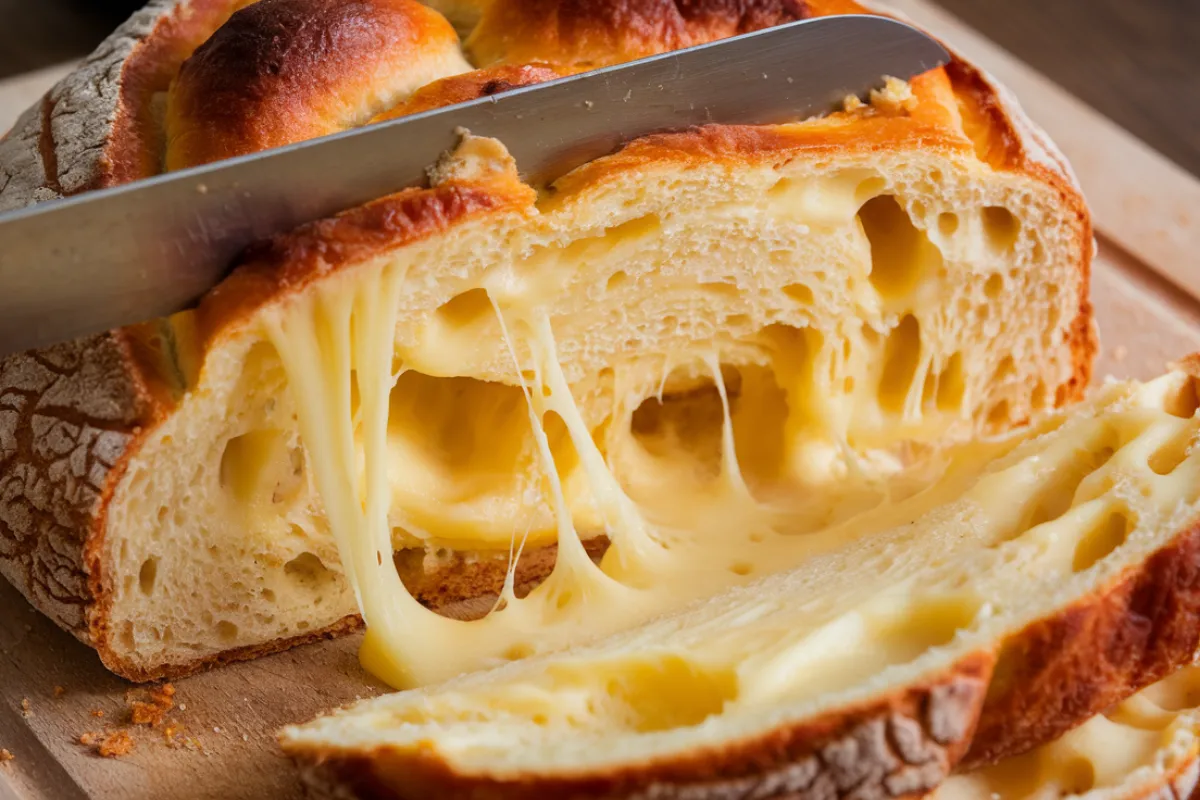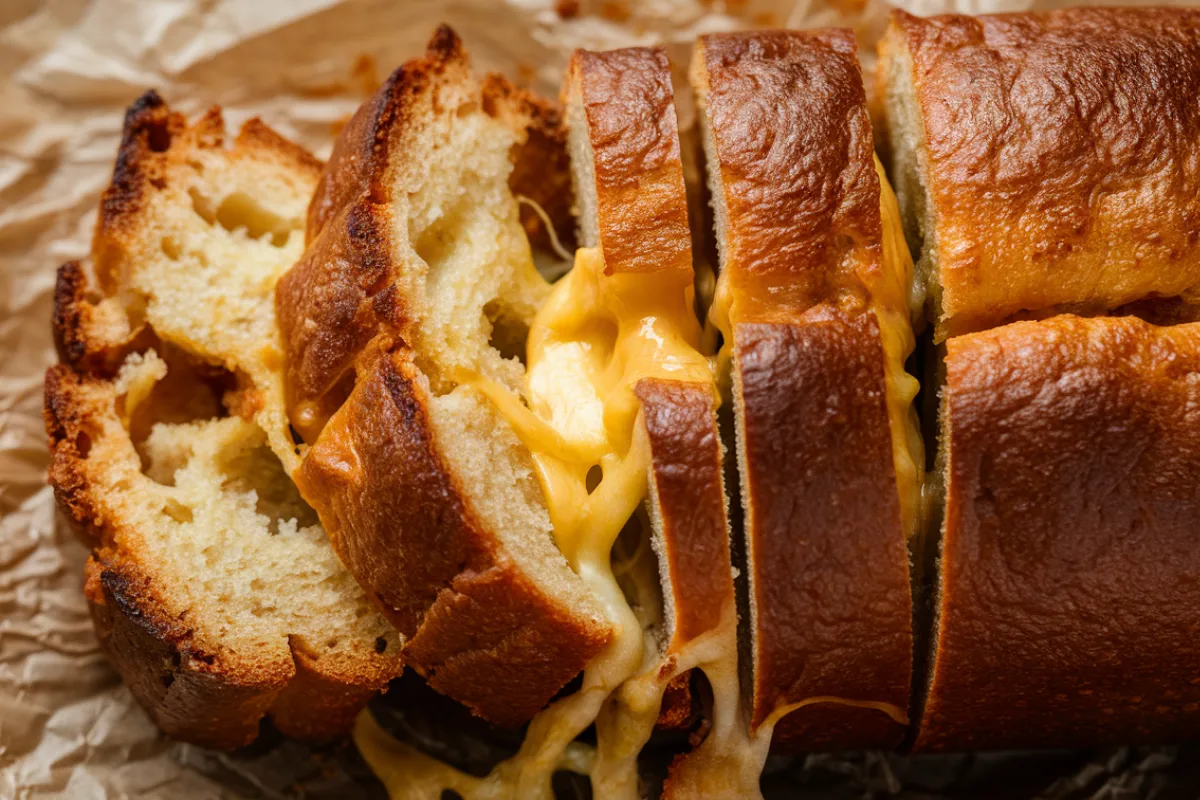Bread and cheese are two staple ingredients that have been enjoyed together for centuries. Whether it’s a simple sandwich, a sophisticated grilled cheese, or a delightful fondue, the combination of these two foods is a culinary classic. In this guide, we will dive into the world of this particular cheese, exploring its origins, different types, recipes, and tips to perfect this comforting dish. By the end of this article, you’ll be ready to create your own masterpiece!
Introduction to Bread Cheese
What Is Bread Cheese?
Also known as Juustoleipä or Finnish squeaky cheese, this unique type of cheese combines bread-like characteristics with a semi-soft texture. Originating from Finland, it has a mild, buttery flavor and a firm texture that softens when heated. Unlike other cheeses, this one doesn’t melt completely when heated, making it perfect for grilling, frying, or baking.
The History and Origins
This cheese has a rich history dating back to the 19th century in Finland. It was traditionally made with reindeer milk, though cow’s milk is more commonly used today. The cheese was often enjoyed as a special treat during festive occasions. Over the years, it has gained popularity beyond Finland, especially in the United States, where it’s often served as an appetizer or dessert with honey or jam.
Ingredients for Making Bread Cheese
Key Ingredients
To make this traditional Finnish cheese, you will need the following ingredients. Each one plays a crucial role in achieving the perfect texture and flavor:
- Whole Milk (1 gallon)
- Role: Whole milk serves as the primary ingredient, providing the rich and creamy texture that characterizes this cheese. The fat content in whole milk is essential for achieving the right consistency and flavor.
- Substitutions: While whole milk is preferred, you can use 2% milk for a slightly lighter version. For those looking to reduce fat content even further, skim milk can be used, but the resulting cheese will be less creamy and rich.
- Rennet (1/4 teaspoon)
- Role: Rennet causes the milk to coagulate, separating into curds and whey. This is a critical step in cheese-making, as it allows the curds to form the solid base of the cheese.
- Substitutions: Animal rennet is traditional, but you can use vegetarian or microbial rennet if you prefer a vegetarian option. Each type of rennet may have slightly different instructions, so be sure to follow the manufacturer’s guidelines.
- Salt (1 teaspoon)
- Role: Salt enhances the flavor of the cheese and also acts as a preservative. It also draws out moisture from the curds, aiding in the cheese’s texture.
- Substitutions: You can use kosher salt or sea salt. If you’re watching your sodium intake, you can reduce the amount of salt slightly, but keep in mind that it will affect the flavor.
- Cheesecloth
- Role: Cheesecloth helps to drain the whey from the curds, allowing you to shape and press the cheese into the desired form. It’s essential for achieving the firm texture characteristic of this type of cheese.
- Substitutions: If you don’t have cheesecloth, a clean, fine-weave kitchen towel or even a clean pillowcase can work in a pinch.
- Heavy Cream (Optional, 1/2 cup)
- Role: Adding heavy cream to the milk before curdling results in an even richer and creamier product. This is optional but recommended if you prefer a more decadent flavor.
- Substitutions: You can omit the heavy cream for a lighter version.

Optional Ingredients for Variations
If you want to experiment with different flavors, consider adding the following optional ingredients:
- Fresh Herbs (1-2 tablespoons)
- Examples: Rosemary, thyme, dill, or chives.
- Role: Fresh herbs can be mixed into the curds before pressing to infuse the cheese with additional flavors. This adds complexity and a fresh, aromatic quality.
- Substitutions: Dried herbs can be used, but fresh herbs provide a more vibrant flavor.
- Spices (1 teaspoon)
- Examples: Black pepper, cumin, paprika, or chili flakes.
- Role: Adding spices gives the cheese a unique twist, making it more flavorful and versatile in various dishes.
- Substitutions: Ground spices can be used, but for a more robust flavor, freshly ground spices are preferred.
- Garlic (1-2 cloves, minced)
- Role: Garlic, when mixed into the curds, creates a savory, aromatic product. It pairs well with herbs and spices, adding depth to the flavor profile.
- Substitutions: Garlic powder can be used if fresh garlic is unavailable.
Equipment Needed
In addition to the ingredients, having the right equipment is essential for making this Finnish delicacy:
- Large Pot: For heating the milk and curds.
- Thermometer: To monitor the temperature of the milk and curds accurately.
- Cheese Mold or Baking Pan: For shaping the cheese.
- Colander: For draining the whey from the curds.
- Pressing Weight: For pressing the cheese into a firm block. A clean, heavy object like a jar of water can serve as a weight.
The Art of Making Bread Cheese
Step-by-Step Instructions
- Heat the Milk: Begin by heating the milk to 90°F (32°C). Stir gently to prevent scorching.
- Add Rennet: Once the milk reaches the desired temperature, add the rennet. Stir well, and then let it sit undisturbed for about an hour until the milk curdles.
- Cut the Curds: After the curds form, cut them into small cubes using a long knife. Let the curds rest for a few minutes.
- Cook the Curds: Slowly heat the curds to 105°F (40°C) while gently stirring. This helps the curds firm up.
- Drain the Whey: Pour the curds into a cheesecloth-lined colander to drain the whey. Press the curds to remove excess moisture.
- Shape the Cheese: Transfer the curds into a mold or a pan, pressing them down firmly. Let the cheese sit for several hours or overnight to firm up.
- Bake the Cheese: Traditionally, people bake or grill this type of cheese to give it a golden-brown crust. Preheat your oven to 400°F (200°C) and bake the cheese until it forms a crispy crust.
Variations in the Recipe
- Herb-Infused Cheese: Add fresh herbs like rosemary, thyme, or garlic to the curds before pressing them into the mold.
- Spiced Cheese: Mix in spices such as cumin, black pepper, or paprika for a flavorful twist.
Pairing Bread Cheese with Other Foods
Classic Pairings
This Finnish delicacy pairs beautifully with both sweet and savory accompaniments. Some classic pairings include:
- Honey or Jam: The sweetness of honey or jam complements the mild, buttery flavor, creating a perfect balance of flavors.
- Fresh Fruits: Serve with fresh berries, apple slices, or grapes for a refreshing contrast.
- Nuts: Toasted nuts like almonds or walnuts add a crunchy texture that pairs well with the soft, warm cheese.
Wine Pairings
Pairing this cheese with the right wine can elevate the dining experience. Here are some excellent wine choices:
- Chardonnay: A buttery Chardonnay enhances the creamy texture.
- Pinot Noir: The light, fruity notes of Pinot Noir complement the subtle flavor of the cheese.
- Sauvignon Blanc: The crisp acidity of Sauvignon Blanc cuts through the richness, creating a refreshing balance.
Health and Nutritional Insights
Nutritional Benefits
This cheese is not only delicious but also packed with nutrients. It is a good source of protein, calcium, and essential vitamins. A serving can contribute to your daily intake of:
- Protein: Essential for muscle growth and repair.
- Calcium: Vital for strong bones and teeth.
- Vitamin B12: Important for nerve function and red blood cell production.
Making It Healthier
For those looking to enjoy this cheese with fewer calories or fat, consider the following tips:
- Use Low-Fat Milk: Substitute whole milk with low-fat or skim milk to reduce the fat content.
- Reduce Salt: While salt is necessary for flavor, you can use less to make a lower-sodium version.
- Portion Control: This cheese is rich and filling, so enjoy it in moderation as part of a balanced diet.

Cultural Significance of Bread Cheese
In Finnish Culture
In Finland, this cheese is more than just a dish; it’s a cultural icon. People often serve it during special occasions and holidays, such as Christmas and Easter. Traditionally enjoyed with cloudberry jam, a rare berry that grows in the northern regions of Finland, this cheese symbolizes togetherness and celebration in Finnish households.
Around the World
While rooted in Finnish tradition, this type of cheese has made its way around the world. In the United States, specialty cheese shops often carry it, and people frequently choose it as an appetizer at parties. Other countries have their versions of this cheese, such as the Lebanese Halloumi, which shares similar characteristics.
Tips for Cooking and Serving Bread Cheese
Cooking Techniques
- Grilling: Grill slices of this cheese for a smoky flavor and a crispy exterior.
- Pan-Frying: Pan-fry the cheese in a bit of butter or oil until golden brown.
- Baking: Bake it with a drizzle of olive oil and herbs for a savory appetizer.
Serving Suggestions
- As an Appetizer: Serve with a variety of dips and spreads, such as pesto, tapenade, or hummus.
- In Salads: Add warm cubes to a fresh salad for a hearty and satisfying meal.
- On Bread: Top a slice of crusty bread with grilled cheese and a dollop of chutney for a delicious snack.
FAQs About Bread Cheese
What Makes It Different from Other Cheeses?
This Finnish cheese stands out because it doesn’t melt completely when heated. Its firm texture softens and becomes slightly chewy, making it ideal for grilling or frying. This characteristic sets it apart from other cheeses that tend to become gooey and runny when cooked.
Can I Make It at Home?
Yes, you can make this cheese at home! With a few simple ingredients and some patience, you can create your own batch. The process involves curdling milk, pressing the curds, and then baking the cheese to perfection.
How Should I Store It?
Store this cheese in the refrigerator, wrapped in parchment paper or placed in an airtight container. It will keep for about a week. If you plan to keep it longer, consider freezing it. When ready to use, thaw it in the refrigerator overnight and then grill or fry it as desired.
What Are Some Popular Dishes That Use This Cheese?
This versatile cheese can be used in various dishes. Some popular options include:
- With Honey and Berries: A sweet and savory dish that’s perfect for breakfast or dessert.
- Grilled Sandwiches: Upgrade your grilled cheese sandwich by using this cheese for an extra layer of flavor.
- Pizza Topping: Use it as a topping on homemade pizza for a unique twist.
Is It Suitable for Vegetarians?
Yes, this cheese is suitable for vegetarians as long as vegetarian-friendly rennet is used. Be sure to check the label if you are purchasing pre-made cheese to ensure it meets your dietary preferences.
Conclusion: Embracing the Bread Cheese Tradition
This cheese offers a delightful and versatile culinary experience. Whether enjoyed on its own, paired with sweet or savory accompaniments, or used as a key ingredient in various dishes, it is sure to impress. By making your own at home, you can fully appreciate the craftsmanship that goes into this traditional delicacy.
The process of making and enjoying this cheese connects us with centuries-old traditions, bringing a piece of Finnish culture to our tables. So why not try making your own and share this delightful treat with friends and family? The rich, buttery flavors and satisfying texture are sure to make it a favorite in your home.


1 thought on “The Ultimate Guide to Bread Cheese: A Culinary Delight”